As a professional dog trainer, I’m going to say something that might surprise you: If your dog struggles with leash reactivity, training alone may not fully solve the problem.
Now, don’t get me wrong—training is absolutely essential for behaviour change. I have numerous videos on my Youtube channel showing reactive dogs being trained, and I even offer a free guide teaching my favourite leash reactivity training exercise. But despite how important training is, it’s just one piece of the puzzle.
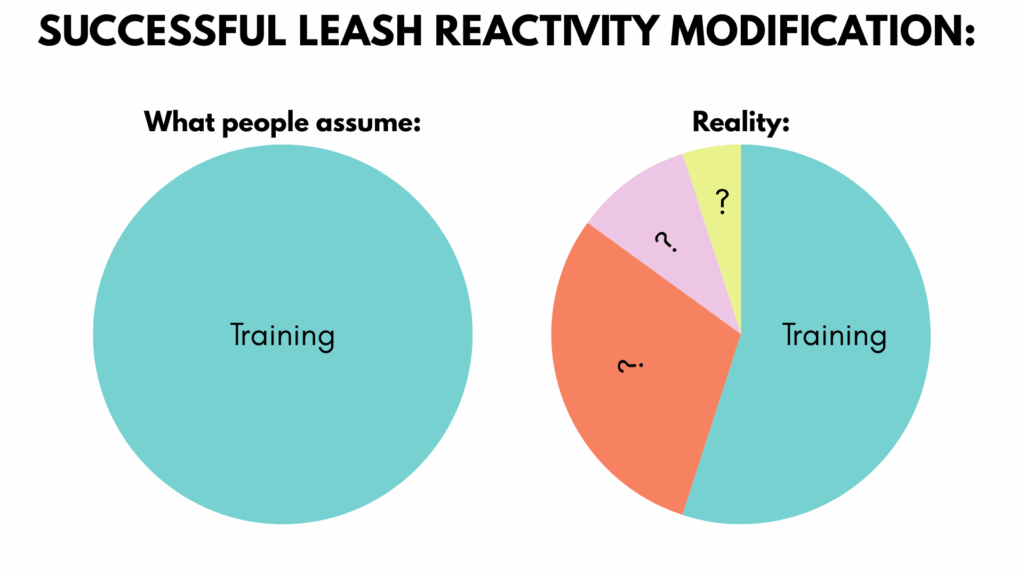
In this post, I’ll walk you through three often-overlooked factors that play a huge role in your dog’s leash reactivity.
If you’ve been feeling stuck or frustrated with your dog’s reactivity progress, these tips may be the missing piece!
(Prefer video content? Watch the Youtube format here instead):
Think of Leash Reactivity Like a Combination Lock:
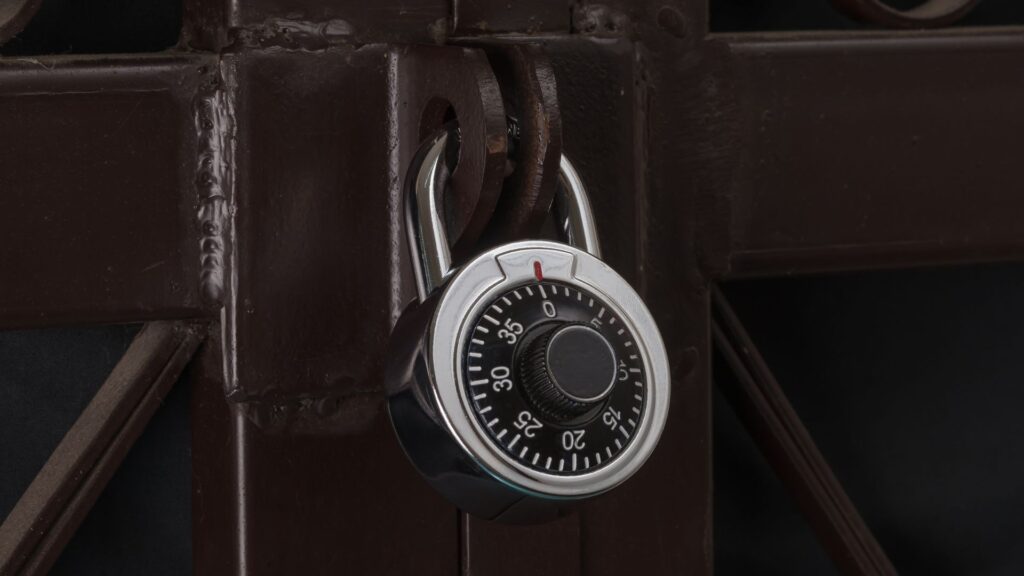
Changing reactive behaviour is kind of like unlocking a combination lock—you need to input all the right “codes”, while also avoiding the wrong ones. This sounds complicated at first, but once you understand the code, it’s surprisingly simple.
I think of training as inputting the right codes, while the 3 practical tips I’m going to suggest below are avoiding the wrong codes.
Both are important for success! If you’re struggling to make consistent progress, here are three practical adjustments that can make a huge impact.
Tip #1: Use a Longer Leash
A longer leash is one of the most underrated tools in leash reactivity training.
Many people instinctively use a short leash to keep their reactive dog close-by, especially if the dog is large or strong. It makes sense—you want to feel in control. But short leashes can actually make reactivity worse for two main reasons:
1. Short Leashes Restrict Sniffing
Sniffing is a natural and essential behavior for dogs. It provides mental stimulation, serves as social communication, and—most importantly for reactive dogs—it helps relieve stress.
Some studies show that sniffing on walks can reduce the dogs heart rate, while others have shown that providing certain scents to shelter dogs can reduce arousal and increase resting behaviours. Sniffing is believed to activate the parasympathetic nervous system, the part associated with calm and relaxation. For dogs prone to reactivity (a state of over-arousal), anything that calms the nervous system helps support better training outcomes.
More proper peer-reviewed research is needed before we can make huge claims, but as a dog trainer, I’ve consistently seen sniffing make a big difference. I see a noticeable change in a dog’s body language after they sniff. I’ve also noticed that dogs who use sniffing as a self-soothing tool tend to recover faster from triggers and progress quicker in training overall.
If a leash reactive client doesn’t sniff, I’ll use tactics like treat scatters to encourage sniffing and help build that skill.
I think it’s hard for us humans to grasp just how powerful sniffing can be. Our primary sense is sight, while dogs experience the world mainly through smell. Engaging their main sense is crucial for their wellbeing!
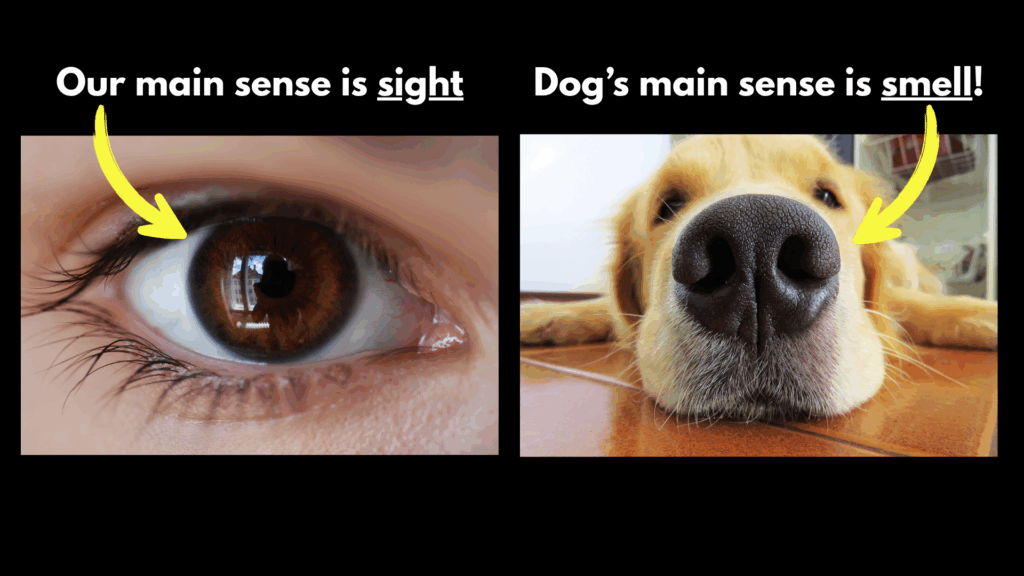
However, the most interesting smells are often further off of the sidewalk or trail, so using too short of leash prevents your dog from accessing those smells unless issue #2 arises:
2. Short Leashes Create Tension
The only way your dog can reach a smell on a very short leash is by pulling. There’s a saying in dog training:
“What gets rewarded gets repeated.”
Since sniffing is so rewarding, pulling towards a smell heavily reinforces that behaviour —leading to more leash tension over time.
Worse still, leash tension can increase leash reactivity.
If tension is present when a trigger appears, it can make your dog feel trapped or restricted, increasing the likelihood of an overreaction—like barking, lunging, or growling.
The Fix?
Use a 6–12 ft leash and train your dog to walk without constant leash tension.
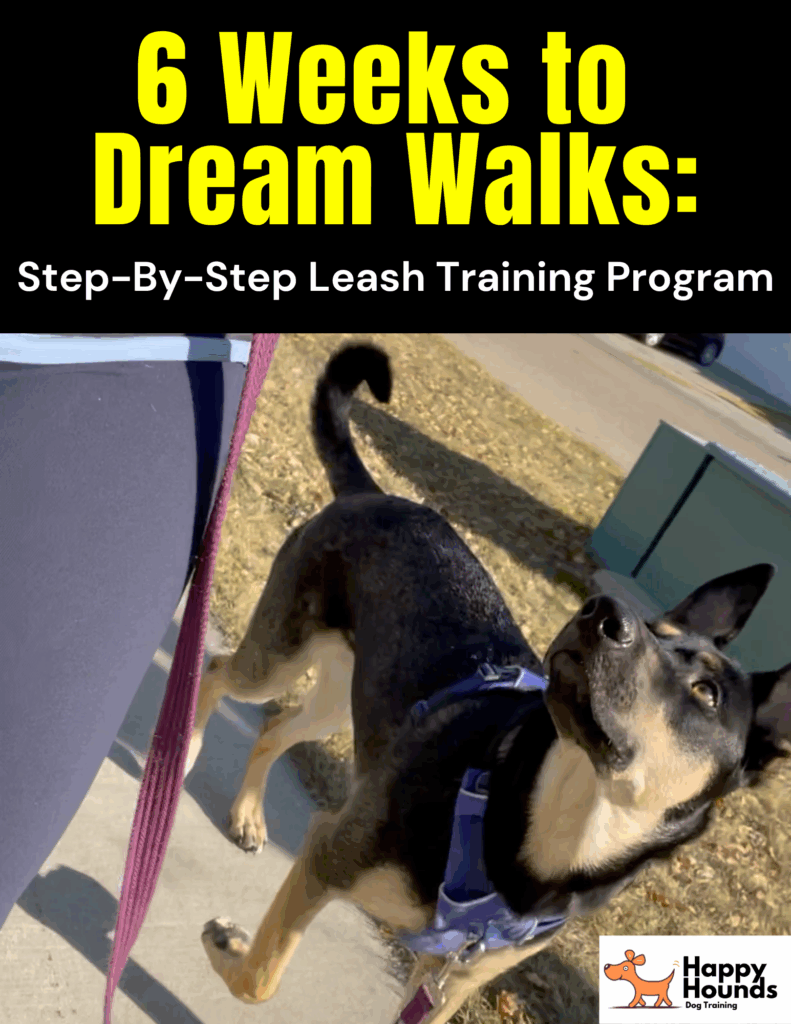
Many people also benefit from a hands-free leash. I find this helps clients to feel more secure that their dog is safely tethered to them, which helps prevent unconscious leash tensing when a trigger is spotted.
Tip #2: Choose the Right Harness
Many reactive dogs are walked using collars, which can pose serious risks. High-impact or sustained pressure on a dog’s neck can cause long-term medical issues, especially for dogs prone to pulling or lunging.
One of the first changes I make with new clients is switching to a well-fitting, comfortable harness. However, not all harnesses are created equal.
Avoid Harnesses That Restrict Movement
Some harness styles restrict shoulder movement or cause pinching near the armpits. This discomfort can create a negative feedback loop during walks:
- The dog sees a trigger and pulls.
- The harness causes discomfort.
- The discomfort gets associated with the trigger.
- The reactivity gets worse over time.
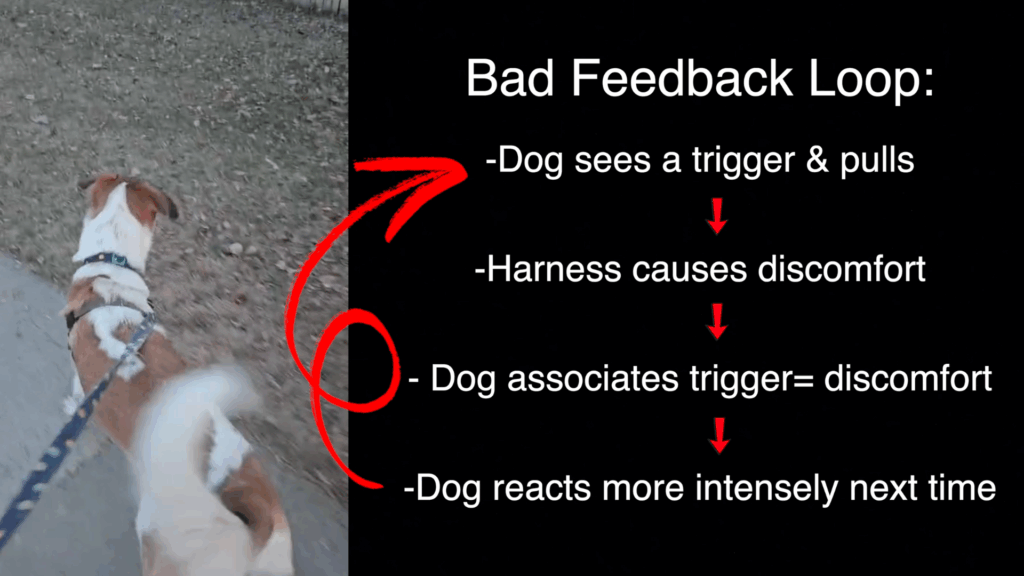
That’s why it’s so important to use a non-restrictive, adjustable harness designed for comfort.
What About the Myth That Harnesses Cause Pulling?
Here’s a quick thought:
Do running shoes make you run?
Of course not.
A harness doesn’t cause pulling—poor leash training does.
Still not convinced? Give this quick video a watch:
If pulling is a concern, focus on teaching leash skills rather than relying on restrictive gear!
Tip #3: Address Harness-Related Stress
This one often flies under the radar—even for experienced dog owners.
Many reactive dogs show signs of stress around their harness, even if they’ve been wearing it for years. Sometimes it’s obvious (like running away), but other times it’s more subtle—lip licking, freezing, or showing hesitation.
Why does this matter?
Trigger Stacking
Trigger stacking occurs when multiple stressors pile up within a short period. A dog might handle each one individually, but when combined, they cause a major overreaction.
If your dog is already stressed by the harness before the walk even starts, that’s strike one. Add in a loud noise, a barking dog, or an unexpected trigger—and suddenly your dog explodes over something that wouldn’t normally faze them.
3 Tips to Help a Dog With Harness Fear:
- Put the harness on early
Give your dog time to decompress from that trigger before the walk. - Use two harnesses
Keep the old one for necessary daily walks, while slowly condition your dog to the new one using only positive associations. - Start harness conditioning
Help your dog feel confident about wearing the harness through structured, reward-based sessions. I’ll link my video tutorial for harness conditioning here, and the blog version here if you need help with that.
When the harness is no longer a stressor, your dog is more resilient on walks—and your training becomes much more effective.
Final Thoughts
Solving leash reactivity is complex, but once you understand the “code” it becomes much simpler. Training remains essential, but real progress comes when you consider the full picture: emotional state, physical comfort, and satisfying natural behaviours like sniffing.
Meet your dogs needs, and watch your training results improve!
Disclosure: Happy Hounds uses affiliate links. Purchasing with these links will not cost you any extra, but I get commissions for purchases made through these links. Affiliate links help me to continue to offer free resources & blog posts. I would love if you used them!
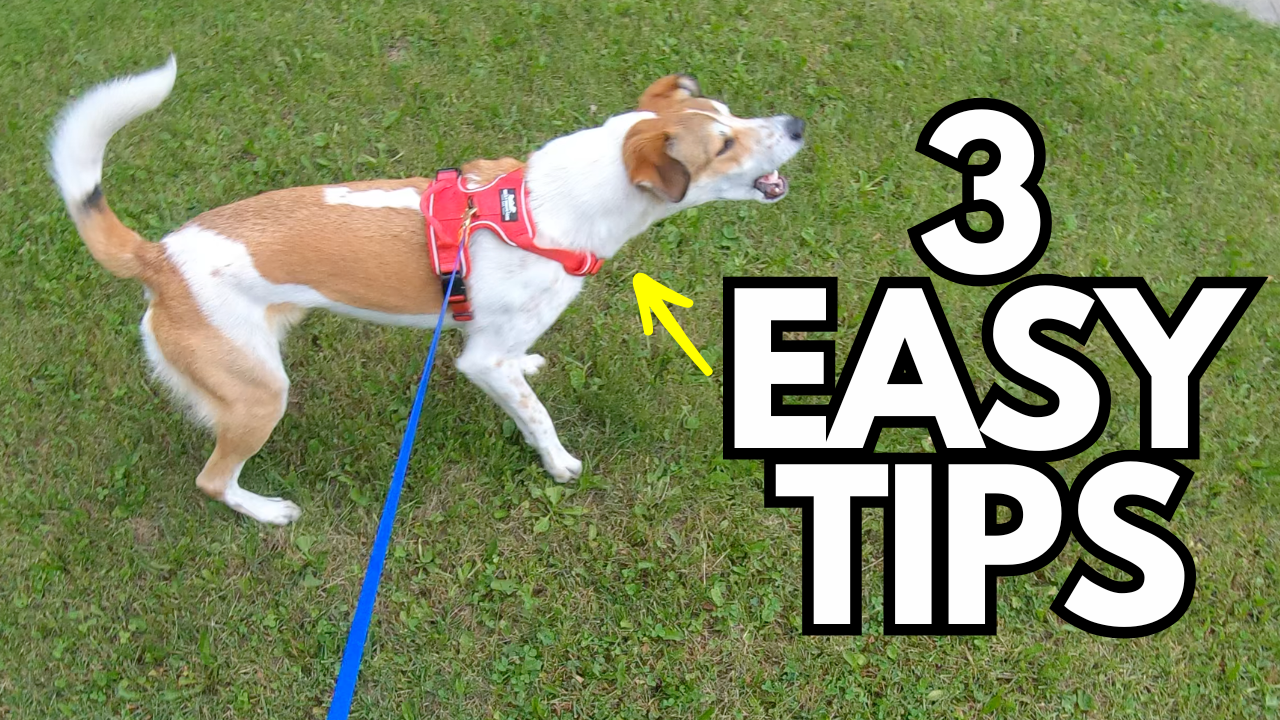

+ show Comments
- Hide Comments
add a comment